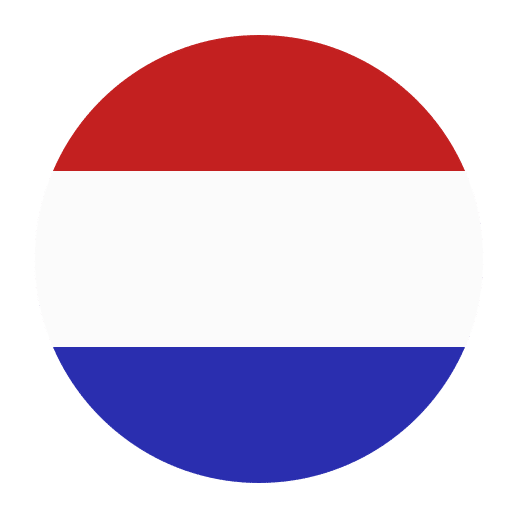The Dutch language, known as Nederlands to its native speakers, is spoken by approximately 24 million people worldwide. It is the official language of the Netherlands and one of the official languages of Belgium and Suriname. As with many languages, Dutch is not immune to the influences of globalization, digitalization, and technological advancement. The intersection of language and technology is a fascinating area that holds significant promise for the future of Dutch. In this article, we will explore how technological advances are shaping the Dutch language, from language learning apps and artificial intelligence to social media and beyond.
Language Learning Apps and Tools
Language learning has undergone a revolution with the advent of digital tools and mobile applications. Apps like Duolingo, Babbel, and Memrise have made learning Dutch more accessible than ever before. These platforms incorporate gamification, making the learning process engaging and less daunting. Through interactive exercises, daily challenges, and instant feedback, learners can grasp Dutch vocabulary, grammar, and pronunciation at their own pace.
Moreover, language learning apps often use spaced repetition systems (SRS), an evidence-based approach that helps learners retain information longer by reviewing it at increasing intervals. This method is particularly effective for memorizing Dutch vocabulary, which can be challenging due to its unique phonetic and grammatical structure.
Virtual Reality (VR) and Augmented Reality (AR)
Virtual Reality (VR) and Augmented Reality (AR) are emerging technologies that have the potential to revolutionize language learning. Imagine immersing yourself in a virtual Dutch-speaking environment where you can practice conversations with native speakers, navigate through a Dutch city, or even attend a virtual Dutch class. These immersive experiences can significantly enhance language acquisition by providing contextual learning and making the process more engaging.
Several startups and educational institutions are already experimenting with VR and AR for language learning. These technologies can simulate real-life scenarios, allowing learners to practice their Dutch in a safe and controlled environment. For instance, a VR app might simulate a Dutch café where learners can practice ordering food and drinks, thereby improving their conversational skills and cultural understanding.
Artificial Intelligence and Machine Learning
Artificial Intelligence (AI) and Machine Learning (ML) are transforming how we interact with languages. AI-powered tools like Google Translate and DeepL have made significant strides in improving the accuracy and fluency of translations. While these tools are not perfect, they are continually learning and evolving, making them increasingly reliable for translating Dutch texts and conversations.
Natural Language Processing (NLP)
Natural Language Processing (NLP) is a subfield of AI that focuses on the interaction between computers and human languages. NLP algorithms are used to analyze, understand, and generate human language in a way that is both meaningful and useful. In the context of the Dutch language, NLP can be used for various applications, such as sentiment analysis, speech recognition, and language generation.
For instance, Dutch NLP models can analyze social media posts, customer reviews, or news articles to determine the sentiment or emotional tone. This can be valuable for businesses looking to understand public opinion about their products or services in Dutch-speaking regions. Speech recognition technologies, powered by NLP, can also assist in developing more accurate and efficient Dutch voice assistants and transcription services.
Social Media and Digital Communication
Social media platforms like Facebook, Twitter, Instagram, and TikTok have become integral parts of our daily lives. These platforms offer unique opportunities for practicing and improving Dutch language skills. By following Dutch influencers, engaging in conversations with native speakers, and consuming Dutch content, language learners can immerse themselves in the language and culture.
Language Evolution and Neologisms
Social media also plays a role in the evolution of the Dutch language. New words and phrases, known as neologisms, often emerge from online communities and digital interactions. For example, the Dutch word “appen” (to text or message via WhatsApp) has become widely accepted due to the popularity of the messaging app. Similarly, English loanwords and internet slang are frequently incorporated into Dutch, reflecting the dynamic and evolving nature of the language.
While some purists may resist these changes, language evolution is a natural process. Social media accelerates this process by providing a platform for rapid dissemination and adoption of new linguistic trends. For language learners, staying updated with these trends can enhance their understanding of contemporary Dutch and make their communication more relevant and relatable.
The Role of Online Communities and Forums
Online communities and forums, such as Reddit, Quora, and specialized language learning platforms, offer valuable resources for Dutch learners. These platforms provide a space for learners to ask questions, share experiences, and seek advice from native speakers and fellow learners. Participating in these communities can enhance one’s understanding of Dutch grammar, vocabulary, and cultural nuances.
Language Exchange Platforms
Language exchange platforms, such as Tandem and HelloTalk, connect language learners with native speakers for mutual language practice. These platforms facilitate real-time conversations, allowing learners to practice their Dutch speaking and listening skills. By engaging in language exchanges, learners can gain practical experience and receive feedback from native speakers, which is invaluable for achieving fluency.
Digital Literature and E-Books
The rise of digital literature and e-books has made Dutch literature more accessible to a global audience. Online platforms like Amazon Kindle, Google Books, and Project Gutenberg offer a vast collection of Dutch e-books, ranging from classic literature to contemporary fiction. These digital resources provide language learners with an opportunity to explore Dutch literary works, improve their reading skills, and gain insights into Dutch culture and society.
Interactive E-Books
Interactive e-books are an innovative way to make reading more engaging and educational. These e-books often include multimedia elements such as audio recordings, videos, and interactive quizzes. For Dutch language learners, interactive e-books can provide a more immersive reading experience by incorporating audio recordings of native speakers, which can help with pronunciation and listening comprehension.
Language Preservation and Revitalization
While technology offers numerous benefits for language learning and communication, it also plays a crucial role in language preservation and revitalization. Minority languages and dialects, including some regional varieties of Dutch, face the risk of extinction due to globalization and cultural homogenization. Technological tools can help document, preserve, and promote these languages for future generations.
Digital Archives and Databases
Digital archives and databases are essential for preserving linguistic diversity. Projects like the Endangered Languages Project and the Digital Repository of Endangered and Minority Languages (DREaM) aim to document and archive lesser-known languages and dialects. For Dutch, this includes regional dialects such as Limburgish, Frisian, and Zeelandic, which have distinct linguistic features and cultural significance.
By creating digital records of these dialects, linguists and researchers can ensure that they are preserved for future study and revitalization efforts. These digital resources can also serve as valuable educational tools for language learners interested in exploring the rich linguistic diversity of the Dutch-speaking world.
The Future of Dutch Language Technology
As technology continues to advance, the future of Dutch language technology looks promising. Innovations in AI, NLP, and immersive technologies will further enhance language learning, communication, and preservation. Here are some potential developments to look forward to:
Personalized Learning Experiences
AI-powered language learning platforms will offer more personalized and adaptive learning experiences. By analyzing learners’ progress and identifying their strengths and weaknesses, these platforms can tailor lessons and exercises to meet individual needs. This personalized approach will make language learning more efficient and effective, helping learners achieve their goals faster.
Multilingual AI Assistants
AI assistants like Google Assistant, Siri, and Alexa are becoming increasingly sophisticated. In the future, these assistants will be able to seamlessly switch between languages, including Dutch, and provide more accurate and context-aware responses. This will enhance the usability of AI assistants for Dutch speakers and learners, making them valuable tools for everyday communication and language practice.
Immersive Language Learning Environments
The development of more advanced VR and AR technologies will create immersive language learning environments that mimic real-life situations. These environments will provide learners with opportunities to practice their Dutch in context, whether it’s navigating a Dutch city, attending a virtual Dutch class, or engaging in conversations with virtual native speakers. This immersive approach will accelerate language acquisition and make the learning process more enjoyable.
Enhanced Translation and Interpretation Tools
AI-powered translation and interpretation tools will continue to improve, offering more accurate and natural translations. These tools will be able to handle complex linguistic nuances and cultural contexts, making them invaluable for travelers, businesses, and language learners. Real-time translation devices and apps will facilitate seamless communication between Dutch speakers and speakers of other languages.
Conclusion
The future of the Dutch language is intertwined with the rapid advancements in technology. From language learning apps and AI-powered tools to social media and digital literature, technology is transforming how we learn, use, and preserve Dutch. These innovations offer exciting opportunities for language learners, educators, and researchers, enabling them to explore the rich linguistic and cultural heritage of the Dutch-speaking world.
As we look to the future, it is essential to embrace these technological advancements while also recognizing the importance of preserving linguistic diversity. By leveraging technology to support language learning and preservation, we can ensure that the Dutch language continues to thrive in the digital age. Whether you are a language learner, a native speaker, or a linguist, the intersection of Dutch and technology offers a wealth of possibilities to explore and enjoy.

